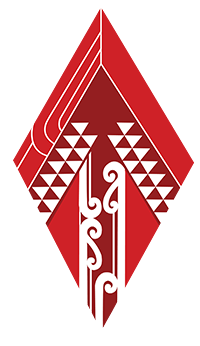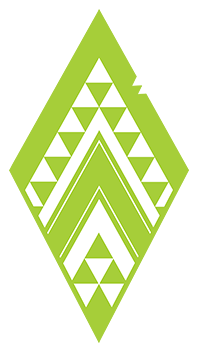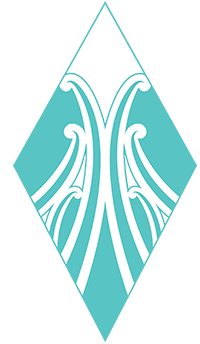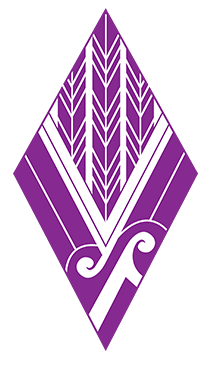Drew Tangohau is a dedicated leader and the Cool Store Team Lead at T&G, a role he has embraced with passion and commitment for over 19 years. As a third-generation employee, Drew’s journey at T&G is deeply rooted in family tradition, with both his father and grandfather having worked at the company. This strong familial connection inspired Drew to join T&G, initially to reconnect with his father and understand the legacy he was part of.
Starting from humble beginnings, Drew’s career trajectory is a testament to his hard work and determination. From his early days on bin repairs to his current leadership role, Drew has consistently demonstrated his ability to lead by example. His journey has not been without challenges, especially as a young leader navigating the complexities of managing more experienced colleagues. However, Drew’s approach of earning respect through innovative ideas and genuine care for his team has solidified his reputation as a respected leader.
Drew is passionate about fostering growth and development within his team. He has been instrumental in supporting initiatives like the Emerging Leaders Program and the Ka Awatea course offered by T&G, which reconnects Māori and Pasifika employees with their cultural roots. His commitment to continuous improvement and cultural inclusion has created a supportive and dynamic work environment.
Beyond his professional achievements, Drew values the importance of family and community. His dedication to his whānau and his desire to see others succeed are evident in his leadership style. Drew’s vision for T&G is one of inclusivity, growth, and excellence, ensuring that every team member feels valued and empowered to contribute to the company’s success.
The six pou of Mata Ārahi Manomano drive the questions we have used to profile Māori & Pacific role models, in the Service sector.

|

|

|

|

|
|

Representing the levels and forms of aroha that can be found throughout our lives across our many communities. We acknowledge the wide range of obstacles and the journey it takes to overcoming everything that stands in our way to expressing aroha within.
Ko Tūhoe, Ngāti Porou, Ngāti Kahungunu ōku iwi. Kei Heretaunga ahau e noho ana.
I am the Cool Store Team Lead for T & G.
Strengths: I think for myself, it’s about working with our people on all levels. You know, coming up to where I am now, we sort of didn’t have the support from higher up, and I think that’s one of the things I brought along with me—to be there for our people, no matter what role they play. Every role is important. I think just being there, being approachable, being a team player is key to building a good culture within our business. To do that, you need to show your staff that you’re in there, in the trenches with them when it’s hard, and celebrate with them when we achieve things.

Seeking guidance from our kaitiaki Hiwa-i-te-rangi, we take a journey through our different aspirations, goals and dreams. This tohu acknowledges hard work, wisdom, the reach of ones goals and the desire that comes from this mahi.
When I left high school, I was like everyone else and didn’t really have a plan. But I ended up getting my Diploma in Film, Video, and Electronic Media. So, when I first came out of high school, my goal was to work in television. I came to work where I am now, sort of passing through to save some money on my way to the big smoke.
I kind of found my niche. I liked the collaboration with all the other people, you know, teamwork. Being so young, I was offered an opportunity in a leading role within our business, and I felt really good about that. So, all my plans to move away were put on hold. I’ve been with this business for 19 years now, working for the same company in different departments.
I’ve worked my way through. At the moment, my role is the Whakatū Cool Store Team Leader. I oversee all the cool store operations. I’ve come through the ranks. I started on bin repairs. I was like the little prospect at the beginning and earned my stripes. Back in those days, you had to earn your way to the next step before the boys would give you a chance. So, I came from Buner, peas, and worked through to become an assistant supervisor, then a supervisor. About six years ago, I took on a new role as a team leader, overseeing the supervisors. Recently, in the last few months, my manager finished up, creating an opportunity for me to take another step further and become the overall team leader of our Hawke’s Bay sites. I’ve got about 60 staff under me, including many cool supervisors.
It’s funny, I was thinking about that last night when you emailed me. We have 12 permanent staff here year-round, and 11 of them are Māori. Everyone’s earned their position through the channels, and it’s cool. We’ve all had that whānau feel. I think that’s what has kept a lot of us around—the connection with each other. It’s difficult in a seasonal-based industry to retain experienced staff.
Since I’ve come into this role, my key focus has been to retain key people. Being a seasonal business, I’m always looking at opportunities to retain these guys and girls. I was going to be the next Peter Jackson or Lee Tamahori, but things got going, and I never really wanted to leave Hawke’s Bay. This is home. I’ve tried living overseas, but I always come back. They say you can earn big money overseas, but here we might not get as high pay rates, but we’re connected to our whānau and whenua. I’ve got brothers in Australia, and I know they miss the fact that they can’t just come and see mum or their brothers. To me, that’s the most important thing—being around our whānau. I knew I wanted to build my career here in Hawke’s Bay. I didn’t want to leave. I don’t know anyone in the big smoke, so this was it for me, and I’m happy and content. This is where I want to be, making it work for everyone.

With adventure comes challenges as well as obstacles to overcome. We stand proud as we overcome these obstacles. This tohu draws inspiration from the Niho Taniwha and Aramoana patterns. We acknowledge reaching our destination and preparing ourselves for the many new adventures ahead.
That’s very much focused on building all our people. You know, we talk about growth and growing our people and giving them these opportunities. Recently, we’ve done what we call the ELP course, Emerging Leaders, and we’ve got all of our key people on those courses, including myself. Woof, woof. You know, the supervisors and staff. We all wanted to be part of it. We didn’t want to say, “Oh, I think you should do this because I don’t need that.” It’s not about that. Let’s go together. So yeah, T&G have the emerging leaders, and our business has put us through the Ka Awatea course, which is to get our Māori and Pasifika people reconnected to the culture, which I had never heard of before. A lot of our people here have gone through the Ka Awatea course. These opportunities are there, and our business is very much headed that way. Cultural inclusion is awesome, and these are reasons why I stay around. I see the vision.
Don’t get me wrong, like everyone, we have our ups and downs. But I’ve got the right people around me to problem-solve, to look at these things and see how we can improve on everything that we do.
You know the vision for the company. We’re all about it. It helps to build a high-achieving, all-inclusive culture within our business.
Yeah. One of our key pillars within our company vision is kaitiakitanga. It’s about respecting the whenua and the people and growing our people.
That’s one of our key visions, and it’s based on the three pillars: our people, our produce, and the world. And that’s cool. That’s cool because we didn’t have any of that coming through before. These are the sorts of things that the business is looking into now.

These patterns represent bravery and being strong in the face of adversity. We strive to be persistent and positively challenge anything that threatens to alter, restrict, and put a barrier in the way of our desired pathway.
I think for myself, having people believe in me and what I was capable of doing was crucial. You know, there’s a lot of us who don’t really know what we possess until someone sees something in us and mentions it. I was almost exactly the same. I thought I was just going to be a forklift driver, that this was my lot. But when I started seeing our leaders showing me and opening my eyes to what I brought to the business, it was huge for me. I realized I could do a lot more. I could offer more and move higher up. My opinion matters.
That’s what we’ve done as we’ve come up through the ranks—encouraged our people to be more involved and given them the comfort of knowing their opinions matter. We do a lot of project work in the off-season, looking at our processes and improving them. Those ideas don’t come from me; they come from our people. Our people drive those. When you show them that you’re actually going to action their thoughts and opinions, that’s what it’s all about. It was done for me, so I’m going to do that for everyone else as well.
We’re all about encouraging ideas. It’s something that’s been pushed in the last couple of years. People might have felt like they weren’t being heard or thought, “This is what I’ve done for 20 years, and I’m just going to carry on doing it,” even though it was the hardest way to do something. When they see other people’s ideas being actioned, it encourages them to bring forward their ideas as well. That’s how you grow and build the culture within your teams. You get everyone invested in it.
We used to do Lean; we call it Continuous Improvement (CI). A few of us leaders have been put through competitive systems certificates, and then we drive the CI mindsets. We’re still learning, but we’re learning off each other. We have the orchard sectors. Last week, we went out to one of the orchards, and they showed us how they’re getting on with their CI.
We call them T1,T2 meetings. It’s about pushing the daily agendas, what’s needed, and who’s doing what. It’s about making everything more efficient, and everyone’s involved. Everyone has a say.
We’re doing a lot of that. I’ve done Lean back in the day, but they’ve upgraded it to CI, and that’s cool.
We have what we call —Opportunities for Improvement (OFI’s). Staff submit OFIs, and we take them to our Focus Improvement Teams (FIT) —and we push those ideas. Each section, like the packhouse, has a FIT team. We here in the cool stores have a FIT team. We’re constantly looking at everything we do because our aim is to be world-class. We’re a big exporter of apples in this country, and we want to be doing everything the best way possible.
It’s a real drive at the moment. We do our weekly CI-15 meetings and work on projects all the time. I did some projects last year that required CapEx, required money to fund the ideas. But we have the backing of our CEO and our managers. They’re willing to let us push these ideas and back us with the money because they trust that we know how to improve everything we do.
That’s what we do. We do a lot of projects, especially in the off-season. A lot of the focus is around CI.
We have a lot of transparency now. A lot of the vision was pushed behind closed doors, and we were never a part of it. Now, the company’s direction is open-door policy. We get to see what’s happening, what’s in the works, and we get to have input into those plans.
It’s a game changer.

Here we are drawing inspiration from the Pūhoro pattern. The pūhoro is used here to represent the strength, speed and agility needed to move forward and accomplish ones goals.
Everyone’s gotta start somewhere. You know, it’s long been a thing where people never really thought the apple industry was a career choice. But with the changes and the increase in fruit volumes and everything that’s happening now, there are opportunities out there for people to come in and make a career in the horticulture sector.
If you’re looking to come into this industry, that’s common. We have new people starting every year. It’s about including them. To me, it doesn’t matter if they’ve been here for one year or 20 years. You play an important part in this business. It’s about growing our people, no matter how long they’ve been here. There has to be continuous growth. To be part of this, you just have to come in and be ready. If you want to make a career out of it, there are opportunities here. We’re here to support those people with courses and training. We’ve all done it, and that’s cool.
We do a pre-season academy because a lot of our whānau out there get their forklift licenses, but they aren’t given an opportunity to learn how to work the forklift. Here at our business, we do a pre-season forklift academy for people who are keen to learn. We bring them in, train them, show them the basics of forklifts, and slowly evolve them into moving around bins and pallets. We get them comfortable so that when the fruit starts coming in, they’re ready to go. We bring in people from all walks of life and all ages. For our older whānau who have trouble with the computer side of things, we spend time with them to get them comfortable. Everyone picks it up.
Back in the day, you had to come up the hard way, but that’s not the case anymore. It’s about looking after our people, getting them part of the team, and ensuring they’re comfortable and safe. Safety is first. People who haven’t had much experience might find themselves pushed into a part of the business they’re not comfortable in, but we don’t do that. The safety of our people is more important than anything. That’s number one.

Success, best mentioned in the whakatauki “Tūwhitia te hopo, mairangatia te angitū!” Feel the fear and do it anyway!
Yeah, so this is gonna be deep. I started at T&G because this is where my father worked. My grandfather worked here too. I’m third generation. I think part of the reason I came here was to connect with my father. I wanted to work alongside him and get to know him because I knew growing up he spent a lot of time here. We might have seen him less than some of his workmates. So, I think that was part of my initial reasoning for hanging around—to reconnect with my dad.
A lot of the challenges I had coming through were because I was always the youngest, the young buck. When I got moved into leadership roles, I was challenged a lot by the older boys. They didn’t want to be told what to do by me. I had to show them what I could do and earn their respect.
It was very challenging coming through as a 20-21 year old and having to fill the shoes of telling the older guys what they had to do for the day. I wasn’t a natural-born leader. I learned how to be a leader through my journey here at T&G and applied it to every position I had. It was by leading by example. If the guys saw that I had ideas that saved them time or looked out for them when they felt run down, that’s how I earned their respect. Hopefully, I still have it to this day.
Memorable moments include challenging myself. When I was a supervisor and they created the team leader roles, I challenged myself and said I wanted to be a team leader. I proved to myself that I was capable of fulfilling those requirements. That was huge for me, and I think it’s huge for anyone. You might not know if you can really do it, but you give it a go. Back yourself, plan how the season would roll, how people would react to your guidance and leadership, and when it happens, that’s the best thing. And getting to know my dad, spending more time with my old man.
My dad still works for me. He’s been here for 45 years. He started in 1979, and he’ll hate that I’ve said that out loud. But it’s cool. My brother works for me as well, and he’s part of our team. This place has always been whānau-based. A lot of whānau work here. It’s easier to hold whānau accountable for not turning up and stuff like that. It’s cool.
He’s proud. He always makes sure I’m not leaving and that we stay here together. I know he’s proud, and it’s pretty cool.
Having the whānau around is great. These are careers that, unless you’ve been exposed to them, you won’t know what else is out there. I just want to change the perception of cool store work. It’s not just forklift driving. There’s more to it now. You can be a forklift driver, and that’s cool. We have a lot of opportunities. But there’s so much room for growth. You can do whatever you want in this business.
These are the people that are gonna do what needs to be done. The attractive thing is knowing that they contribute to something bigger. They get shown the ropes and can progress as far as they want to go.
We need to get better at recognizing our people instead of calling it “business as usual.” We need to recognize our people, no matter how big or small their contributions are. It’s something we’re starting to do. You need to take the time to come down, talk to our people, and give them their recognition. That’s all it takes. It’s not hard.